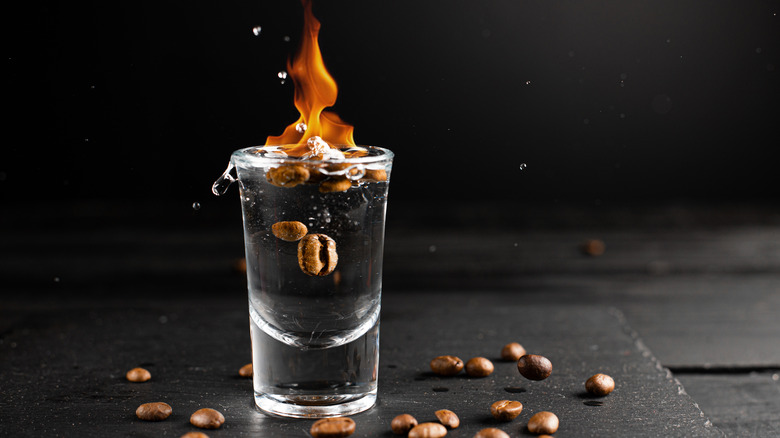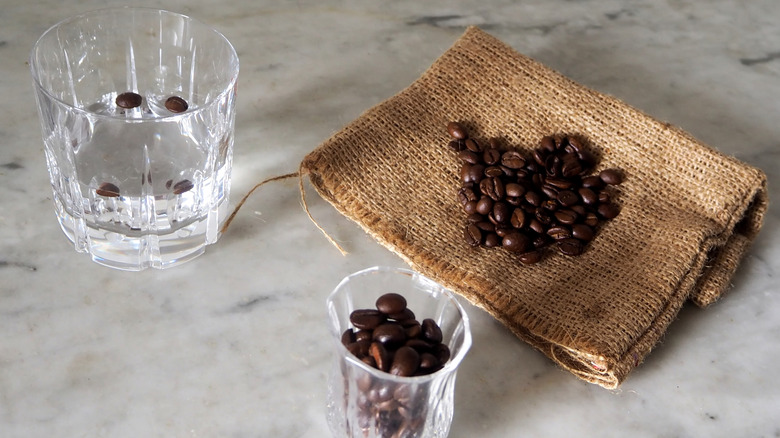How Do You Drink Sambuca?
Italy is a country that deeply savors its post-dinner digestifs (which are not the same as aperitifs). There are fragrant grappas, almond-flavored amarettos, syrupy limoncellos, and herbal amaros — each served in small glasses at the end of rich and hearty meals. Sambuca is another delicious example. Made from anise, aniseed, or star anise, as well as elderflowers, sugar, and other herbs and spices on occasion, sambuca has a sweet, licorice flavor with subtle floral and herbal notes. Sambucas made with elderberries can be red or black in color, but white (clear) is traditional.
The clear liqueur is traditionally poured in a shot or tulip glass and drank as sambuca con la mosca, meaning "sambuca with the fly." "The fly" in question is no housefly or mosquito, but rather three roasted coffee beans which signify health, happiness, and prosperity. According to some legends, the tradition of sambuca con la mosca began after an old woman once found three flies buzzing over her glass of sambuca. To get rid of the pesky insects, she decided to set the liqueur ablaze!
Flambéing sambuca is a practice that is still very popular, especially in bars. The dancing flames warm up the drink and give it a toasty, caramelized flavor. You might occasionally find sambuca with seven coffee beans floating on top instead, which represent the seven hills of Rome. The bitter beans are slowly chewed after the sambuca is gulped down, as a way to enhance the sweet aftertaste of the digestif.
Pairing sambuca with different flavors
One of the best flavors to pair sambuca with is coffee, whether you're adding it to coffee cocktails or pouring it into your morning cup of caffeine to drink espresso like a true Italian. The latter combo is called a caffè corretto, a shot of fresh espresso "corrected" with a dash of liqueur. Sambuca is also served as an ammazzacaffè, or "coffee killer": Strong liquors consumed after a coffee break to "kill" the taste of the espresso and its caffeine effect.
Sambuca also pairs fabulously with tropical fruits like pineapple and coconut, as well as peach, cranberry, and citruses like lemon, orange, and lime. You could even combine it with fresh herbs like basil and mint, or spices like nutmeg, clove, and cinnamon. The liqueur will shine in any cocktail that features these ingredients, whether it's a simple sambuca sour with lemon juice, a fruity spin on martinis, or a Sazerac, where it works as a marvelous swap for absinthe. When in doubt, you can always top sambuca with just some ice water (much like its Mediterranean cousin, ouzo), or top it with club soda, lemonade, fruit juice, or even sparkling wine.
Sambuca's sweet licorice flavor makes it an excellent liqueur to add to desserts, too. Whisk it into cakes and mousses, blend it in boozy milkshakes, or pour it over plain vanilla ice cream for a twist — it's so much more than just a shot to try on a night out!


